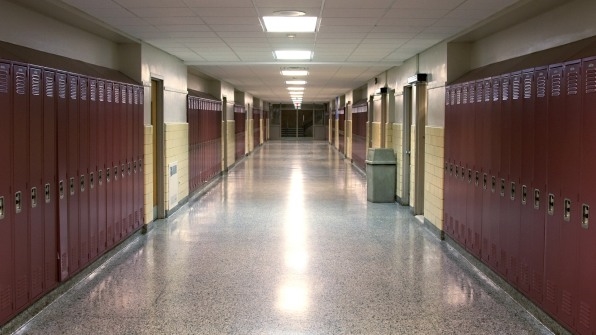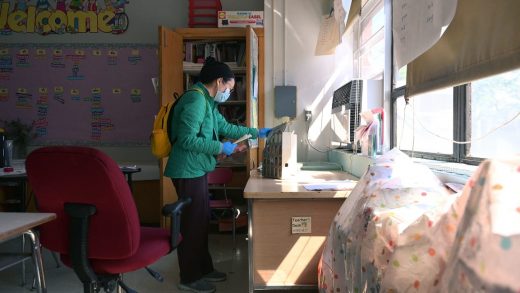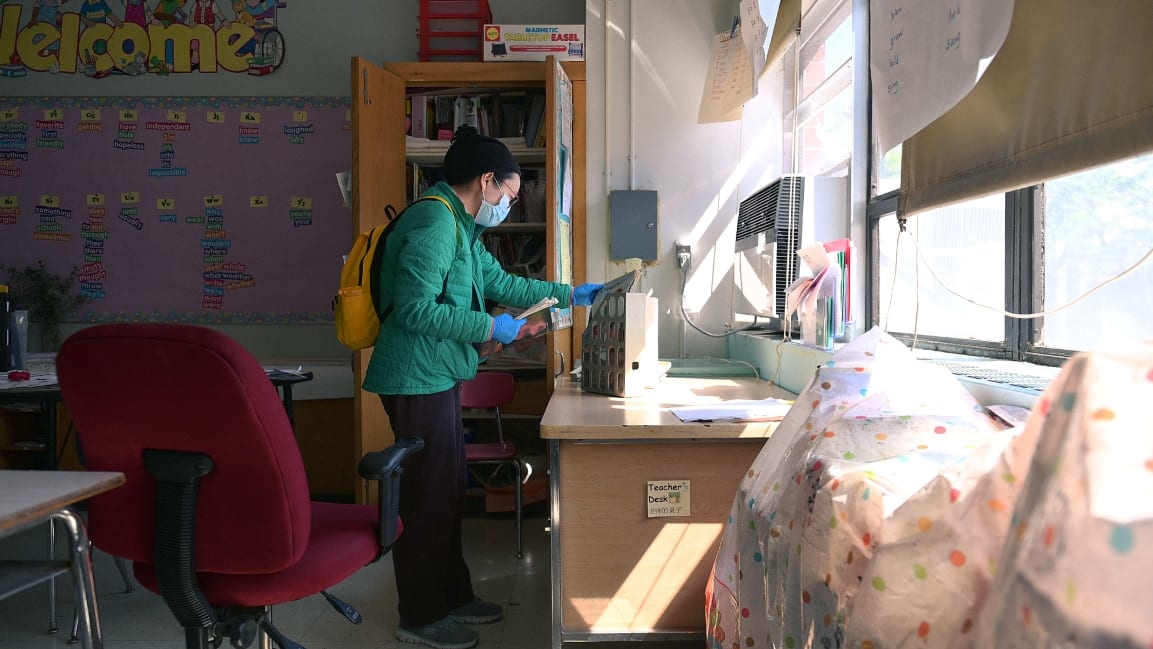Many school buildings can’t safely reopen right now. Here’s why
By Samantha Keppler and Karen Smilowitz
When COVID-19 first arose, the battle cry was “flatten the curve.” As states make plans to reopen, get ready for another important strategy: “de-densify.”
Simply put, to make it safer to go to schools, restaurants, and other places where people have to go in big groups, these places will have to become less crowded than they used to be.
It may help to think of the density of a building as a fraction. You’ll find the right fraction by calculating the number of total people inside (the numerator) divided by the walkable floor area (the denominator). There are two ways to make that building less crowded. Either decrease the numerator by reducing the number of people inside the space or increase the denominator by expanding the physical space available.
To flatten the curve, most U.S. schools reduced the numerator to zero when about 51 million children stopped attending school in person. Over 100,000 schools are now closed through the remainder of the 2019-2020 school year.
There’s no agreement yet on what it will take to get classrooms safely humming again. To observe the Centers for Disease Control and Prevention recommendation that everyone remain six feet apart, another government agency has suggested that schools aim for a density of one student per 113 square feet. Anecdotal evidence suggests classroom density was around one student per 20-30 square feet before the pandemic.
How can schools find or create more space?
Increasing school space
We are operations researchers who study educational logistics problems such as school bus transportation and making decisions with tight budgets.
There are widespread public health concerns about whether it will be safe to reopen schools after what would have been the usual summer break. Information changes daily. For example, there are reports of a new illness striking children that appears to be related to COVID-19.
Still, schools need to plan to reopen, perhaps in time for the start of the 2020-2021 school year.
There’s more to it than figuring out how to maintain enough distance between students when they’re sitting at their desks. Schools also have to decide how to handle everyday situations such as kids playing basketball in the school gym, eating in the cafeteria, or sitting together in the auditorium for a school assembly.

Students need to be able to safely enter and exit buildings without bumping into each other. They’ll need room to pass one another in hallways. Districts may need to purchase and distribute masks and other personal protective equipment to teachers, janitorial staff, students, and others.
Students will need to keep the sharing of calculators and technology to a minimum and make a frequent habit of wiping down all devices. They’ll have to wash their hands more often and for longer periods of time. The frequency and intensity of cleaning and sanitizing floors, walls, tables, and other surfaces will need to increase as well.
To make this easier, one general approach under consideration is to reduce the number of students in school buildings at one time.
Some states, like Indiana and Ohio, are considering a mix of remote and in-person instruction, with students alternating what they do day by day.
A related strategy is staggering attendance during the same school day. Some students would attend in the morning and some in the afternoon. Halving the number of kids present would make it easier for schools to follow through with CDC guidelines to reduce congestion in classrooms, hallways, and cafeterias.
Finding new space
Some education leaders have proposed considering another strategy: finding new space.
Splitting students in different classes or grades across multiple locations lowers the building density. This can be done by moving half of a school’s students and teachers to another location. Students who attend at each location could be more spread out than if they were all in just one place.
One way to do this is to keep high school instruction fully remote in the fall and teach younger students in vacated high school buildings.
Our research suggests there is another strategy to find new space for schools.
For years, public, charter, and private schools have shared space with community organizations such as churches and community centers that accommodate programs running before or after official school hours.
Schools could use YMCAs, public libraries, or community centers to expand the space they have available. If schools split attendance between their main school site and those other sites, then most students at all grade levels in a district could potentially have an in-person option when schools reopen.
Different strokes
In the end, the best approach will be depend on what’s right for specific schools and their local communities.
Operations researchers have helped find solutions since the 1960s. For example, they assisted with school desegregation in the 1960s and 1970s. More recently, they aided high schools that shifted their start times to let students get more sleep. Today, operations researchers can help local school systems face the threat of COVID-19.
Samantha Keppler is assistant professor of technology and operations at the Stephen M. Ross School of Business, University of Michigan, and Karen Smilowitz is the James N. and Margie M. Krebs professor in industrial engineering and management sciences at Northwestern University. This article was republished from The Conversation under a Creative Commons license. Read the original article.
(53)



